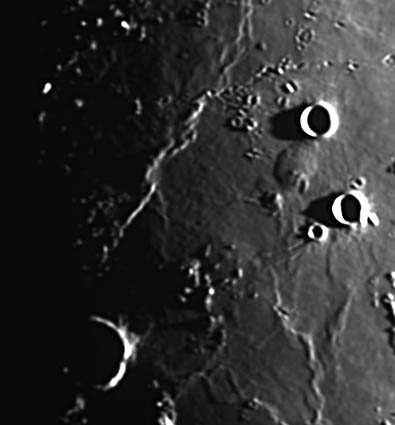Mare Swells

Explanation:
The continuing search for domes by members of the Geological Lunar Research group has resulted in acquisition of many excellent low Sun views of the maria, such as this one by Jim Phillips. Although a few classical domes hemispherically shaped and often with a summit pit have been discovered on such photos, the majority of the newly found features are less regular in outline, relatively flat and often adjacent to or engulfing steeper topography. The well known feature near Gambart C and D (1 on mouseover) is a prime example of this class of subtle topographic structure. I prefer to not call this type of mare protuberance a dome because it may have a completely different origin from classic domes; instead I call it a swell. We dont yet understand how swells form. They are clearly made of mare material, but it is not clear if they formed by eruption of lava onto the lunar surface like domes or if they are some sort of inflation or lifting up of a pre-existing mare surface. Because swells lack the morphologic features of domes, and tend not to be associated with other eruptive landforms, I favor the second idea. But this 10-15 km long swell near Gambart C is bigger than any terrestrial lava inflation mound that I know of on Earth, and the 70 km wide Valentine Dome is even bigger. A smaller swell (2) occurs just south of the big one, and an interesting area of small hills of indeterminate origin is nearby. We need high quality, low Sun images such as this for every mare area of the Moon to really understand maria.
